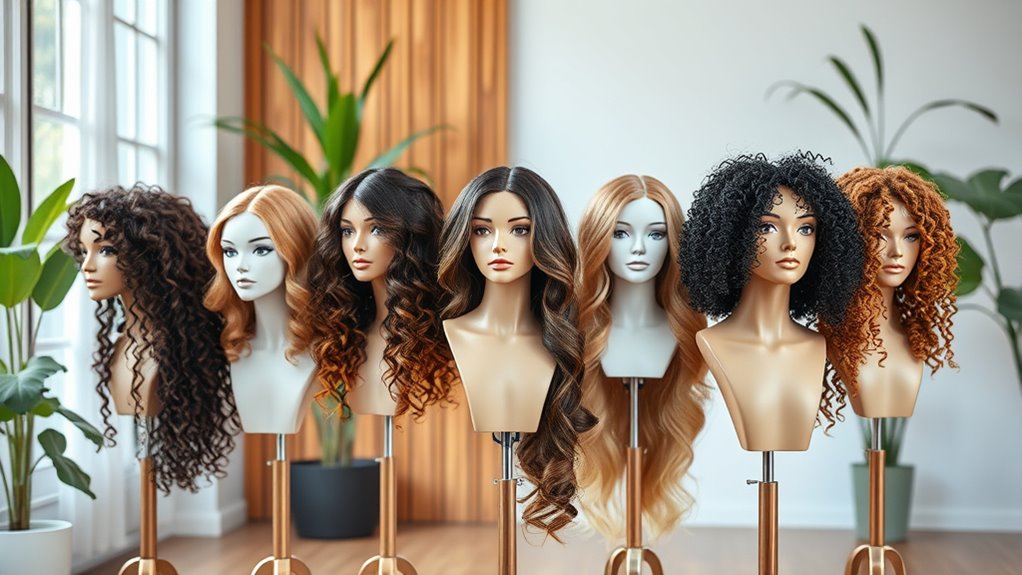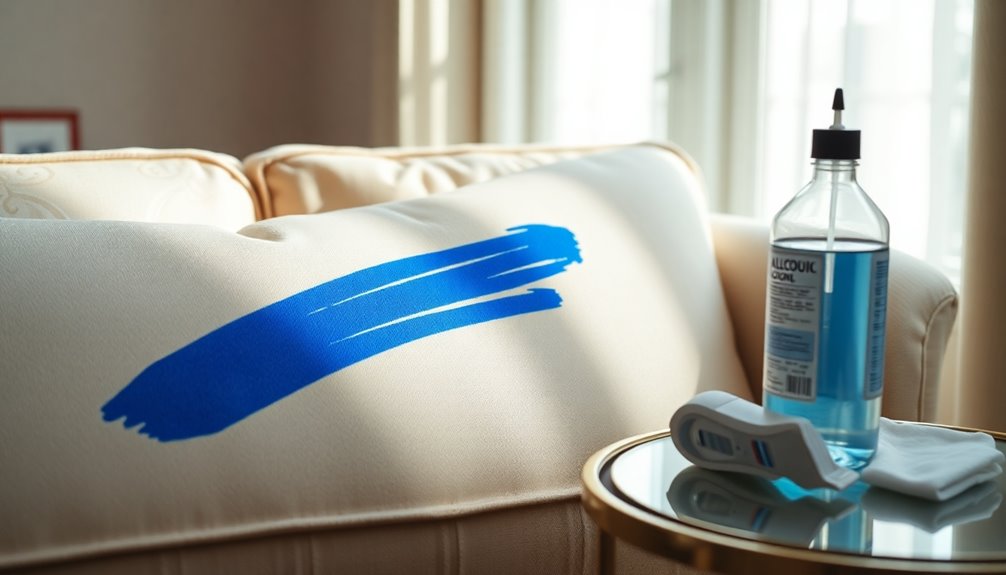Discover how to care for your hair by understanding your hair type, texture, and specific needs. Select products like gentle shampoos, conditioners, and treatments suited to your hair’s unique characteristics. Protect your hair from damage with proper washing techniques, regular conditioning, and seasonal adjustments. Avoid excessive heat styling and incorporate natural remedies to boost health and shine. Keep your hair vibrant and strong by following tailored routines—more tips await to help you achieve the best results.
Key Takeaways
- Understand your hair type and texture to select suitable products and styling methods.
- Identify specific hair concerns like dryness, oiliness, or damage for targeted care.
- Choose shampoos and conditioners based on hair needs, avoiding harsh ingredients and focusing on nourishing components.
- Incorporate regular deep conditioning and protective routines to maintain hair health and vitality.
- Minimize heat styling and use protective products to prevent damage and promote healthy, manageable hair.
Understanding Your Hair Type and Texture
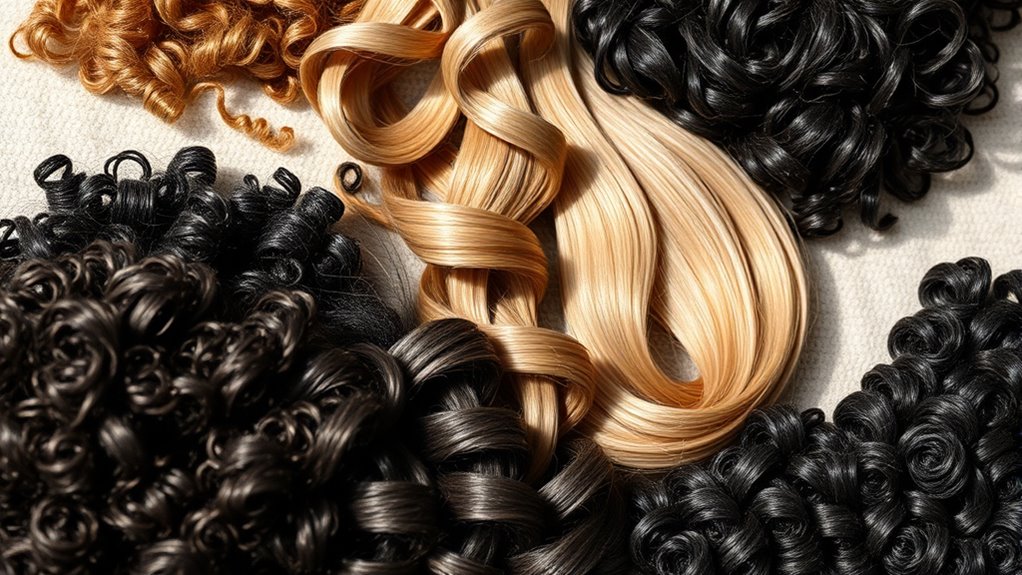
Understanding your hair type and texture is essential for choosing the right products and styling techniques. When you know if your hair is straight, wavy, curly, or coily, you can select products that enhance your natural look without causing damage. For example, straight hair often needs lightweight serums, while curly or coily hair benefits from rich creams and oils to maintain moisture. Your hair’s texture—fine, medium, or coarse—also impacts your approach; fine hair might need volumizing products, whereas coarse hair requires more hydration and smoothing. Recognizing these characteristics helps you avoid trial-and-error and ensures your hair stays healthy and vibrant. By understanding your unique hair type and texture, you set a strong foundation for effective haircare routines.
Identifying Your Hair Needs and Concerns
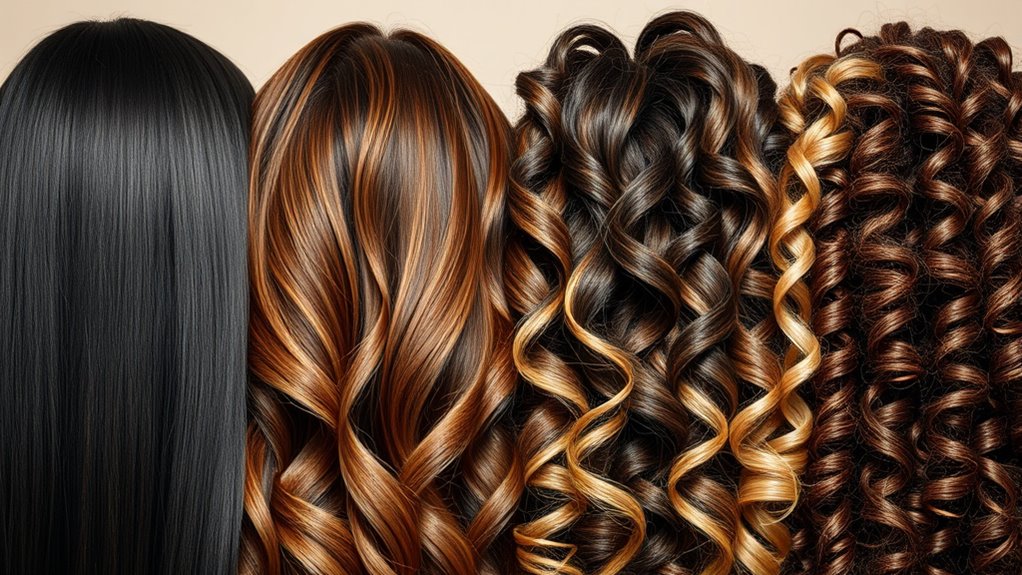
To give your hair the right care, you need to understand its specific needs. Start by evaluating your hair type and identifying any concerns like dryness, oiliness, or damage. Recognizing these points helps you choose the most effective products and routines. Additionally, understanding your hair’s unique characteristics can guide you in selecting appropriate grooming practices that enhance its health and appearance. Knowing about individual hair types and their specific requirements can further improve your haircare routine. Incorporating knowledge about skincare patches can also inform how you protect your scalp and hair from external factors that may cause irritation or damage. For example, awareness of diverse hair textures and their needs, as discussed in the variety of hair types, can help tailor your haircare approach more precisely. Moreover, understanding how contrast ratio affects visual clarity can inspire better lighting and environment choices that benefit your haircare space.
Assessing Hair Type
Figuring out your hair type is the essential first step toward developing a personalized haircare routine. To do this, examine your hair’s texture, porosity, and elasticity. Is your hair straight, wavy, curly, or coily? Does it feel fine or thick? Test its porosity by placing a strand in water—does it sink quickly or float? Check elasticity by stretching a strand gently—does it stretch without breaking? Use this quick guide to classify your hair:
| Hair Type | Texture | Porosity | Elasticity |
|---|---|---|---|
| Straight | Fine, Medium, Thick | Low, Medium, High | Low, Medium, High |
| Wavy | Fine, Medium, Thick | Low, Medium, High | Low, Medium, High |
| Curly | Fine, Medium, Thick | Low, Medium, High | Low, Medium, High |
| Coily | Fine, Medium, Thick | Low, Medium, High | Low, Medium, High |
Understanding your hair type can help guide product selection, ensuring you choose formulas that suit your specific needs. Additionally, knowing your hair’s porosity can influence how often you should wash or condition your hair to maintain its health. Recognizing your hair’s elasticity also helps determine the appropriate styling and treatment methods to prevent damage and breakage. Incorporating tuning techniques tailored to your hair type can further optimize your haircare routine for better results. Being aware of hair health considerations such as damage and dryness can help you adapt your routine over time to maintain optimal hair condition.
Recognizing Hair Concerns
Recognizing your hair concerns is a vital step in creating an effective haircare routine. When you identify issues like dryness, oiliness, breakage, or scalp irritation, you can select products tailored to your needs. Pay attention to how your hair responds to different treatments and environmental factors. If your hair feels consistently limp, it might need volumizing products; if it’s brittle, strengthening formulas are essential. Notice any persistent dandruff, itching, or scalp redness, which could signal underlying problems. Understanding these concerns helps you avoid one-size-fits-all solutions that might worsen issues. Regularly assess your hair’s condition and be honest about what it needs. This awareness enables you to make informed choices, ensuring your routine effectively addresses your unique hair concerns. Incorporating professional guidance can further help tailor your haircare approach for optimal results. Additionally, being aware of AI safety measures and how they influence product development can ensure you select safer, more reliable haircare options. Recognizing specific hair types and their unique needs allows for better customization of your routine. Developing customized solutions based on your hair’s particular issues can lead to more effective results and healthier hair. Cultivating creative practice can also inspire innovative solutions for your haircare challenges, leading to more personalized and effective routines.
Selecting the Right Shampoo and Conditioner
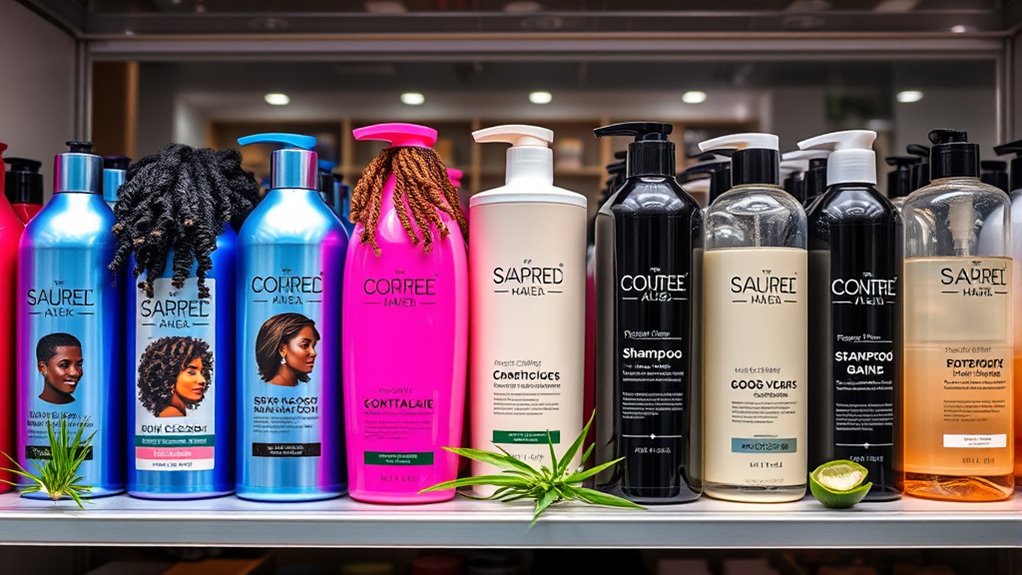
Choosing the right shampoo and conditioner starts with understanding your hair type and needs. Pay attention to ingredients that suit your scalp and hair texture, and consider how often you should use each product. Making informed choices helps keep your hair healthy and manageable. Additionally, selecting products that align with your overall haircare routine can enhance your results and maintain the health of your hair over time. Incorporating appropriate toy types that support your hair care goals, such as gentle scalp massagers or detangling brushes, can further improve your routine. For those with specific concerns, exploring haircare tools and accessories can further support your routine and promote overall hair health. Understanding the role of different products in security can also help you make more effective choices in your haircare regimen. Recognizing the benefits of professional hair color brands can also guide you in selecting the best options for vibrant and long-lasting color.
Hair Type Compatibility
Matching your shampoo and conditioner to your hair type guarantees your hair receives the right care and stays healthy. When choosing products, consider your hair’s unique needs. For example:
- For oily hair, select formulas that regulate sebum without stripping moisture.
- If you have dry or curly hair, opt for hydrating, sulfate-free products that lock in moisture.
- For fine or thinning hair, choose volumizing or lightweight options that don’t weigh hair down.
- Proper gear and handling can help prevent damage, much like maintaining the right drivetrain components on a bicycle to ensure smooth performance.
- Being aware of your hair porosity can help you select products that penetrate and retain moisture more effectively. Understanding your hair type also helps you avoid products that could cause buildup, dryness, or limpness.
- Recognizing your hair texture can guide you in choosing the ideal styling and care routines for healthier hair.
- Additionally, understanding your hair health status can help you tailor your routine to address specific concerns such as damage or scalp issues.
- Always look for labels that address your specific concerns, ensuring your hair remains balanced, healthy, and vibrant. Proper product selection tailored to your hair type maximizes results and maintains hair integrity.
Ingredient Selection Tips
Selecting the right shampoo and conditioner starts with understanding the ingredients listed on the labels. Look for products that match your hair needs—hydrating formulas for dry hair, volumizing for fine hair, or clarifying shampoos for oily scalps. Avoid harsh sulfates, which can strip natural oils, and instead seek gentle cleansers. Natural oils like argan, coconut, or jojoba help nourish your hair, while proteins strengthen strands. If you have color-treated hair, choose products formulated to protect color and prevent fading. For sensitive scalps, look for soothing ingredients like chamomile or aloe vera. Always read labels carefully, and opt for products with ingredients that align with your hair’s specific needs. Proper ingredient selection can make a significant difference in maintaining healthy, vibrant hair. Additionally, selecting products with vetted formulations from reputable brands can ensure safety and effectiveness. Being aware of product safety standards can help you avoid potential irritants or harmful additives in haircare products.
Frequency of Use
The frequency with which you wash your hair can profoundly impact its health and appearance. Washing too often can strip natural oils, while infrequent washing may lead to buildup. To find the right balance, consider these guidelines:
- For oily hair, wash every 1-2 days to manage excess sebum.
- If you have dry or curly hair, washing every 3-4 days preserves moisture.
- For normal hair, washing 2-3 times weekly maintains cleanliness without over-drying.
Adjust based on your lifestyle, activity level, and scalp sensitivity. Using the right shampoo and conditioner suited to your hair type helps optimize results. Remember, consistency is key—find a routine that keeps your hair healthy, shiny, and manageable.
The Importance of Proper Hair Washing Techniques
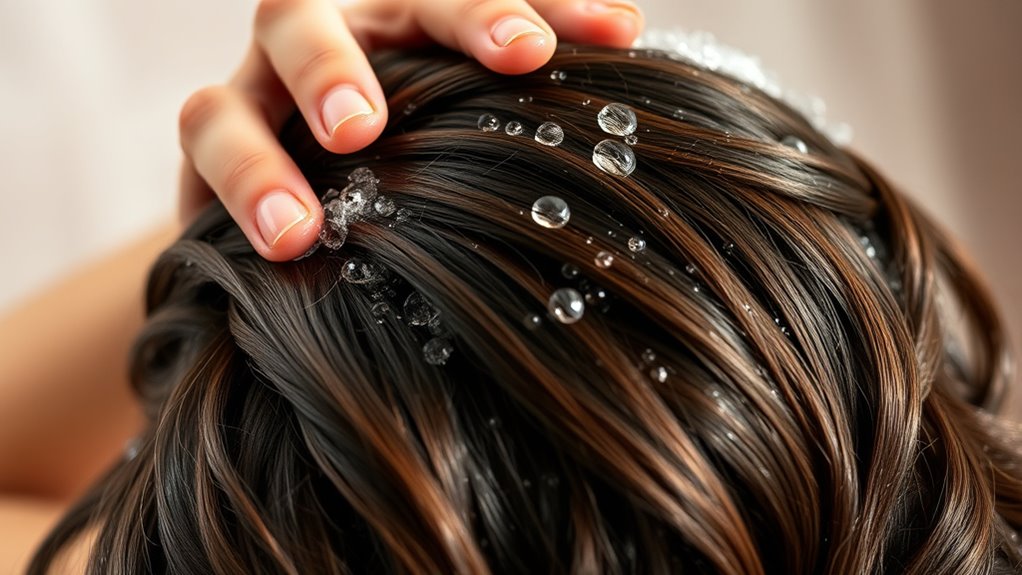
Proper hair washing techniques are crucial for maintaining healthy, clean hair and scalp. When you wash your hair correctly, you remove dirt, oil, and product buildup without stripping natural oils. Start by thoroughly wetting your hair with lukewarm water. Use gentle, massaging motions on your scalp to stimulate blood flow and loosen debris. Apply shampoo mainly to your scalp, then work it through your strands. Rinse completely to avoid residue. To help you remember, here’s a quick overview:
| Step | Action | Tip |
|---|---|---|
| Wet Hair | Use lukewarm water | Avoid hot water, which dries hair |
| Shampoo | Focus on scalp | Use gentle massaging motions |
| Rinse | Remove all shampoo | Ensures no buildup remains |
| Drying | Pat dry, avoid rubbing | Prevents damage and frizz |
Mastering these steps keeps your hair healthy and vibrant.
Deep Conditioning and Hair Masks for Nourishment

Deep conditioning and hair masks provide essential nourishment to restore moisture, strength, and shine to your hair. They penetrate deeply, repairing damage and preventing breakage. To maximize benefits, consider these steps:
- Choose the right mask for your hair type, whether it’s hydrating for dry hair or protein-rich for damaged strands.
- Apply evenly, focusing on mid-lengths and ends, avoiding roots to prevent greasiness.
- Allow sufficient time—typically 10-20 minutes—for the treatment to penetrate fully before rinsing thoroughly.
Incorporating these treatments weekly can markedly improve your hair’s overall health. Regular use ensures your hair remains hydrated, resilient, and vibrant, making every day a good hair day.
Tips for Styling and Managing Your Hair
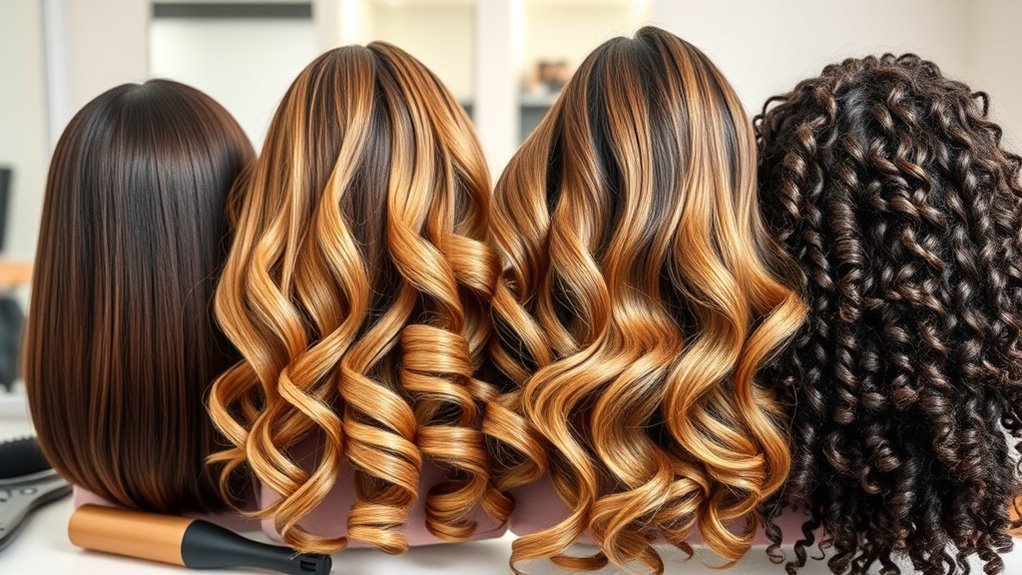
Whether you’re aiming for sleek, tousled, or natural looks, mastering your hair’s management can make styling easier and more effective. Start by detangling gently with a wide-tooth comb or your fingers to avoid breakage, especially when your hair is wet. Use a heat protectant before applying any heat tools like straighteners or curling irons to prevent damage. Embrace your hair’s natural texture when possible; it’s often easier to style and looks more authentic. For added hold, choose lightweight styling products suited to your hair type—gel, mousse, or serum. Regular trims help manage split ends and keep your style looking fresh. Remember, less is more—overstyling can lead to unnecessary damage and frizz. Consistency and gentle handling are key to manageable, beautifully styled hair.
Protecting Your Hair From Damage and Breakage
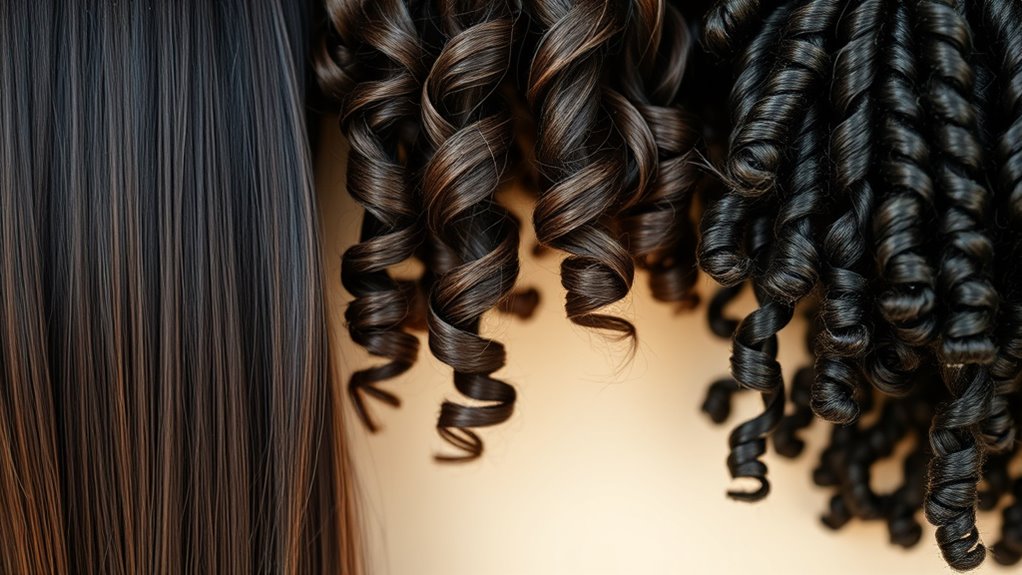
To keep your hair healthy and looking its best, protecting it from damage and breakage should be a top priority. You can do this by adopting simple yet effective habits. First, avoid excessive heat styling by limiting the use of flat irons, curling wands, and blow dryers. Second, use protective products like heat protectants and leave-in conditioners to shield your strands. Third, handle your hair gently—detangle with a wide-tooth comb and avoid tight hairstyles that pull on your roots. These steps reduce stress on your hair fibers, preventing breakage and split ends. By incorporating these practices into your routine, you’ll preserve your hair’s strength and shine, ensuring it stays resilient against daily wear and tear.
Seasonal Haircare Tips for All Climates
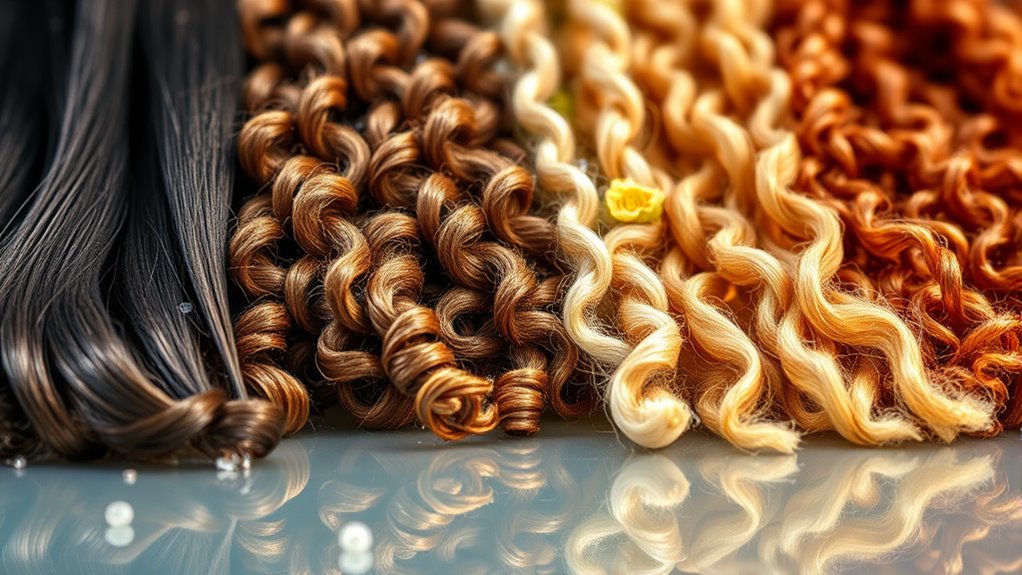
As the seasons change, you should adjust your hair hydration to match the climate, preventing dryness or excess oil. Protect your hair from sun damage during summer, and switch to nourishing, season-specific products. These simple tweaks keep your hair healthy no matter the weather.
Adjust Hydration Levels
Adjusting your hydration levels is essential to keep your hair healthy and looking its best across different seasons. In colder months, your hair tends to become drier due to lower humidity and indoor heating. Conversely, humid summer weather can lead to excess moisture, causing frizz and limpness. To manage this, consider these adjustments:
- Increase hydration in winter with moisturizing shampoos and deep conditioning treatments weekly.
- Reduce product buildup in summer by using lightweight, hydrating sprays that balance moisture without weighing hair down.
- Monitor your hair’s response regularly, adjusting water intake and using leave-in conditioners to maintain ideal hydration levels.
Protect From Sun Damage
Protecting your hair from sun damage is key to maintaining its health and shine throughout the year. UV rays can weaken hair strands, cause color fading, and lead to dryness and breakage. To shield your hair, wear a wide-brimmed hat or scarf when you’re outdoors for extended periods. Apply a leave-in conditioner with UV protection before heading out, especially during peak sunlight hours. Avoid excessive sun exposure, which can strip moisture and damage your scalp. Also, consider using hair products formulated with antioxidants to combat free radical damage. Staying hydrated and rinsing your hair after swimming in chlorinated or salt water helps prevent further harm. Consistent sun protection keeps your hair vibrant, strong, and healthy, no matter the season.
Seasonal Product Swaps
Adapting your haircare routine to the changing seasons guarantees your hair stays healthy and vibrant year-round. As temperatures shift, so should your products. In colder months, opt for richer, hydrating formulas to combat dryness and static. Conversely, in warmer weather, lighter, oil-free products help prevent excess oil buildup and sweat. Consider these key swaps:
- Switch to a nourishing deep conditioner during winter to restore moisture.
- Use a clarifying shampoo in summer to remove excess oil and product buildup.
- Incorporate heat protectants during the colder months if you’re using styling tools more often.
Natural Remedies and DIY Hair Treatments
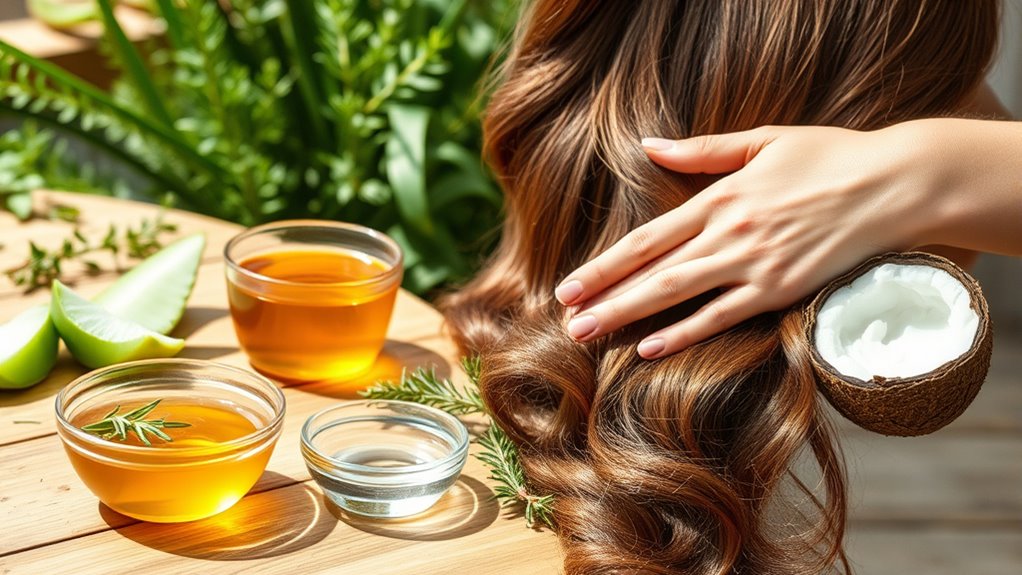
Natural remedies and DIY hair treatments offer an affordable and chemical-free way to improve your hair’s health. You can harness simple ingredients like coconut oil, honey, or aloe vera to nourish your scalp and strengthen strands. For moisturized hair, apply a coconut oil mask weekly—warm the oil and massage it into your scalp and lengths, then rinse thoroughly. Honey mixed with yogurt serves as a natural conditioner, adding shine and softness. Aloe vera gel soothes irritation and promotes growth; simply apply it directly or blend it into a hair mask. These treatments are easy to customize based on your hair type and needs, and they avoid harsh chemicals that can cause damage over time. With regular use, you’ll notice healthier, more vibrant hair without breaking the bank.
Maintaining Healthy Hair Through Diet and Lifestyle

Your diet and lifestyle play a crucial role in maintaining healthy hair. What you consume and how you care for yourself directly affect hair strength, shine, and growth. To optimize your hair health, consider these key factors:
Your diet and lifestyle directly influence your hair’s strength, shine, and growth.
- Prioritize a balanced diet rich in biotin, vitamins A, C, D, E, and omega-3 fatty acids to nourish hair follicles.
- Stay hydrated by drinking plenty of water daily, supporting scalp health and preventing dryness.
- Manage stress through regular exercise, meditation, or hobbies, since stress can lead to hair thinning and breakage.
Avoid smoking, excessive alcohol, and poor sleep, as these habits can weaken hair integrity. Implementing these lifestyle changes helps promote vibrant, resilient hair from the inside out.
Frequently Asked Questions
How Often Should I Trim My Hair for Optimal Health?
You might wonder how often to trim your hair for ideal health. Generally, trimming every 6 to 8 weeks works well to prevent split ends and promote growth. If your hair is damaged or you want a fresh look, consider trimming more frequently. On the other hand, if your hair stays healthy and looks good, you can stretch it out to 10-12 weeks. Regular trims keep your hair looking and feeling its best.
Are There Specific Haircare Products for Colored or Chemically Treated Hair?
Yes, you should look for haircare products specifically designed for colored or chemically treated hair. These products often contain nourishing ingredients like keratin, vitamins, and UV protectants that help preserve your color and strengthen your hair. Use color-safe shampoos and conditioners regularly, and consider deep conditioning treatments weekly. Avoid harsh chemicals and heat styling tools to maintain your hair’s health and vibrant color longer.
Can Diet Alone Improve My Hair’s Texture and Strength?
Sure, your diet alone can do wonders, right? Ironically, while eating nutritious foods boosts your overall health, it’s not a magic fix for perfect hair. You need a balanced approach—good nutrition, proper hair care, and avoiding damage. Focus on protein, vitamins, and minerals, but don’t forget to use suitable products and protect your hair from harsh treatments. Remember, great hair is a combination of many factors, not just what’s on your plate.
What Are the Signs of Hair Damage That Needs Professional Treatment?
You’ll notice hair damage when it feels brittle, dry, or looks frizzy and dull. Split ends, excessive hair breakage, and your hair doesn’t hold styles well anymore. If your scalp is itchy, inflamed, or you see significant hair loss, it’s time to see a professional. These signs indicate damage that needs expert treatment to restore your hair’s health and prevent further issues.
How Does Humidity Affect Different Hair Types and How Can I Manage It?
Humidity impacts your hair by causing it to swell and lose its shape, especially for curly and wavy types. You might notice frizz, flyaways, or increased volume. To manage this, use anti-humidity sprays, anti-frizz serums, or lightweight conditioners that create a barrier. Keep hair hydrated with regular deep conditioning, and consider protective styles that minimize exposure to moisture. These steps help you maintain a sleek, controlled look despite humidity.
Conclusion
By understanding your hair type and needs, you’re well on your way to healthy, shiny hair. Stick to a routine tailored for you, protect your hair from damage, and don’t forget to nourish from the inside out. Remember, hair health is a journey, not a sprint—so patience is key. With consistent care, you’ll see results that make you want to shout from the rooftops. Keep at it, and your hair will thank you!
